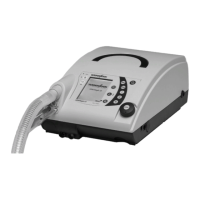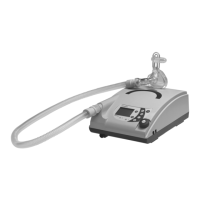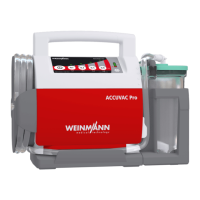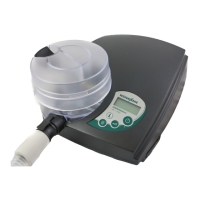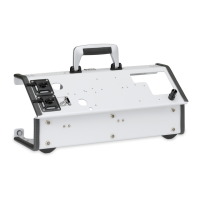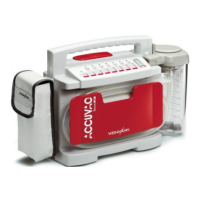1. Push the ventilation tube onto the device outlet port
of the therapy device.
2. Now connect the pressure-measurement tube to the
connection on the device marked .
3. Connect the patient/ventilator interface, e.g. a mask.
4. It is essential to follow the instructions for use of the
patient/ventilator interface and of the exhalation
system.
5. Note that maximum flow rate and the accuracy of
dynamic pressure may deviate if you are not using
Weinmann tubes.
Information relating to a separate exhalation system
Caution!
Always use an exhalation system. Used air containing carbon dioxide escapes from
the patient/ventilator interface (e.g. a mask) through the exhalation system.
Without an exhalation system, the CO
2
concentration in the patient/ventilator
interface and the ventilation tube would rise to critical values and thus obstruct
breathing.
An exhalation system can either be integrated in the patient/ventilator interface, e.g. a
mask, or must be plugged in between the patient/ventilator interface and the patient
circuit in the form of an accessory.
If the patient/ventilator interface, e.g. the mask, does not have an exhalation system, a
separate exhalation system, e.g. Silentflow 2, must be used.
The exhalation system also allows a patient to breathe through his or her nose for a short
time, even if the device were to fail. In the case of full-face masks, breathing in the event
of a fault is through an emergency exhalation valve on the mask.
Connect separate exhalation system (only with leakage ventilation)
To connect a separate exhalation system, proceed as
follows.
1. Plug the exhalation system into the sleeve of the
circuit.
2. Connect the patient/ventilator interface to the
exhalation system.
